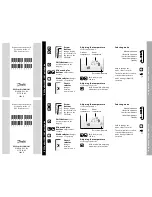
7-9
Cisco Wireless LAN Controller Configuration Guide
OL-9141-03
Chapter 7 Controlling Lightweight Access Points
Cisco Aironet 1510 Series Lightweight Outdoor Mesh Access Points
Cisco 1000 Series Lightweight Access Point Physical Security
The side of the Cisco 1000 series lightweight access point housing includes a slot for a Kensington
MicroSaver Security Cable. Refer to the Kensington website for more information about their security
products, or to the
Internal-Antenna AP1010 Cisco 1000 Series IEEE 802.11a/b/g Lightweight Access
Point Quick Start Guide
or
External-Antenna AP1020 and AP1030 Cisco 1000 Series IEEE 802.11a/b/g
Lightweight Access Point Quick Start Guide
for installation instructions.
Cisco 1000 Series Lightweight Access Point Monitor Mode
The Cisco 1000 series lightweight access points and Cisco Wireless LAN Controllers can perform rogue
access point detection and containment while providing regular service. The rogue access point detection
is performed across all 801.11 channels, regardless of the Country Code selected.
However, if the administrator would prefer to dedicate specific Cisco 1000 series lightweight access
points to rogue access point detection and containment, the Monitor mode should be enabled for
individual Cisco 1000 series lightweight access points.
The Monitor function is set for all 802.11 Cisco Radios on a per-access point basis using any of the Cisco
Wireless LAN Controller user interfaces.
Cisco Aironet 1510 Series Lightweight Outdoor Mesh Access
Points
The Cisco Aironet 1510 Series Lightweight Outdoor Mesh Access Point (hereafter called
AP1510
) is a
wireless device designed for wireless client access and point-to-point bridging, point-to-multipoint
bridging, and point-to-multipoint mesh wireless connectivity. The outdoor access point is a standalone
unit that can be mounted on a wall or overhang, on a rooftop pole, or on a street light pole.
It is a self-contained outdoor unit that can be configured with a wired backhaul connection to an Ethernet
segment for a rooftop deployment or with a wireless backhaul for a pole-top deployment. The AP1510
can be installed anywhere power is available, without the need for a network connection. Using the Cisco
Adaptive Wireless Path Protocol (AWPP), the AP1510 is able to dynamically optimize the best route to
the connected network within the mesh.
The AP1510 operates with controllers to provide centralized and scalable management, high security,
and mobility. Designed to support zero-configuration deployments, the AP1510 easily and securely joins
the mesh network and is available to manage and monitor the network through the controller GUI or CLI.
The AP1510 is equipped with two simultaneously operating radios: a 2.4-GHz radio used for client
access and a 5-GHz radio used for data backhaul to other AP1510s. A wide variety of antennas are
available that provide flexibility when deploying the AP1510 over various terrains. Wireless LAN client
traffic passes through the access point’s backhaul radio or is relayed through other AP1510s until it
reaches the controller Ethernet connection.
Note
For more information on the AP1510, refer to the quick start guide and hardware installation guide for
this access point. You can find these documents at this URL:
http://www.cisco.com/en/US/products/ps6548/tsd_products_support_series_home.html
















































